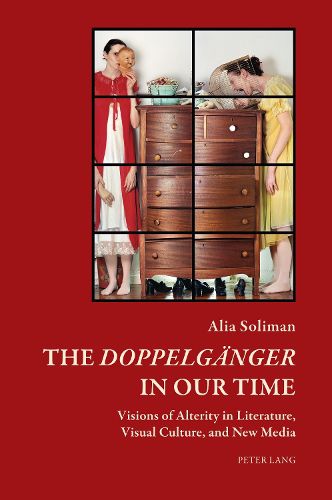Readings Newsletter
Become a Readings Member to make your shopping experience even easier.
Sign in or sign up for free!
You’re not far away from qualifying for FREE standard shipping within Australia
You’ve qualified for FREE standard shipping within Australia
The cart is loading…






This title is printed to order. This book may have been self-published. If so, we cannot guarantee the quality of the content. In the main most books will have gone through the editing process however some may not. We therefore suggest that you be aware of this before ordering this book. If in doubt check either the author or publisher’s details as we are unable to accept any returns unless they are faulty. Please contact us if you have any questions.
<>
(Patrick ffrench, Professor of French, King's College London)
<>
(Gerald Baer, Professor of Literature and Cultural Studies, Universidade Aberta, Lisbon)
<>
(Prof. Umberto Mondini, President, International Centre for Studies of Arts and Humanities, Rome)
The book examines the doppelgaenger persona's gradual shift to representations of the self as simulacrum and responds to changing conceptions of identity that celebrate the potentiality of alterity. Varied literary, visual, and digital narratives of the self showcase the doppelgaenger as an increasingly image-based construction. The increasing visuality of the doppelgaenger corpus engages with notions of exteriorisation, fragmentation, and the materialisation of unfulfilled possibilities, reflecting a sense of self that indulges in multiple realities and alternative lives. The literature of Jorge Luis Borges and Carlos Fuentes reveal the birth of multiple selfhoods that are rooted in temporality; Willem Hermans, Jose Saramago, and Denis Villeneuve put forth under-represented experiences of alienation and the remedial powers of the alter; contemporary photographic campaigns by Cornelia Hediger and Francois Brunelle and digital doppelgaenger series such as <> lead trends in visual culture and new media where the encounter between self and double is constructive, performative, and interactive. Delineating a structural change, the book proposes a paradigm shift that celebrates the female double, multiplicity, and visual and digital engagement and furnishes the reader with an expanded conception of the doppelgaenger figure.
$9.00 standard shipping within Australia
FREE standard shipping within Australia for orders over $100.00
Express & International shipping calculated at checkout
This title is printed to order. This book may have been self-published. If so, we cannot guarantee the quality of the content. In the main most books will have gone through the editing process however some may not. We therefore suggest that you be aware of this before ordering this book. If in doubt check either the author or publisher’s details as we are unable to accept any returns unless they are faulty. Please contact us if you have any questions.
<>
(Patrick ffrench, Professor of French, King's College London)
<>
(Gerald Baer, Professor of Literature and Cultural Studies, Universidade Aberta, Lisbon)
<>
(Prof. Umberto Mondini, President, International Centre for Studies of Arts and Humanities, Rome)
The book examines the doppelgaenger persona's gradual shift to representations of the self as simulacrum and responds to changing conceptions of identity that celebrate the potentiality of alterity. Varied literary, visual, and digital narratives of the self showcase the doppelgaenger as an increasingly image-based construction. The increasing visuality of the doppelgaenger corpus engages with notions of exteriorisation, fragmentation, and the materialisation of unfulfilled possibilities, reflecting a sense of self that indulges in multiple realities and alternative lives. The literature of Jorge Luis Borges and Carlos Fuentes reveal the birth of multiple selfhoods that are rooted in temporality; Willem Hermans, Jose Saramago, and Denis Villeneuve put forth under-represented experiences of alienation and the remedial powers of the alter; contemporary photographic campaigns by Cornelia Hediger and Francois Brunelle and digital doppelgaenger series such as <> lead trends in visual culture and new media where the encounter between self and double is constructive, performative, and interactive. Delineating a structural change, the book proposes a paradigm shift that celebrates the female double, multiplicity, and visual and digital engagement and furnishes the reader with an expanded conception of the doppelgaenger figure.